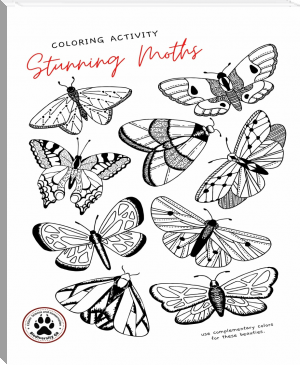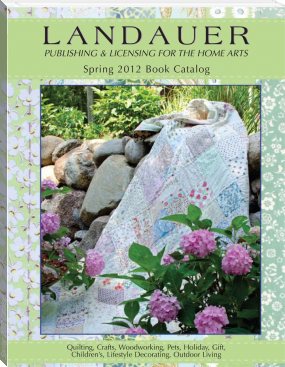Composting: The Easy Way by Ram Velamuri (i want to read a book TXT) 📕

- Author: Ram Velamuri
Book online «Composting: The Easy Way by Ram Velamuri (i want to read a book TXT) 📕». Author Ram Velamuri
Table of Contents
Materials Browns Greens What NOT to Use How do you make the compost? Helpful Tips (in case anything might go wrong) The First Layer Results MaterialsWell, to start off, you're going to need a few things.
Keep in mind that some of these materials can be from repurposed items, and don't have to be brand new. I'll indicate these items with an asterisk*.
Some of these items are also optional, which will be indicated with a ^.
A trash can* Cocopeat^ (you can use potting soil or pre-made compost also) Compost booster^ Browns Greens A drill/soldering iron
That's it!
With a maximum of six materials, you can get started with making your compost. Read through this chapter to find out the specifics of each material.
To make compost, two of the essentials are browns and greens. Without them, compost cannot be formed, and it's paramount that you include this. Well, what are browns and greens?
I've included a comprehensive list of materials which you can use as browns and greens in the following subchapters. If you live in the city or an urban area, you may not be able to find some of the materials. So, you will see a list of alternatives too, which you can use.
I found the total cost of all these items to be around 400 INR (Indian Rupees). That's about $5.50, and 4.48 Euros.
Browns
Browns
As the name suggests, browns are materials which are brown. Here's a list of browns that you can use in your compost.
Leaves Preferably, these should be dried up so that they decompose faster. However, any leaves will work. You can use leaves from your yard if you want to. Branches Branches from yard trimmings, or branches that fall down around your house are great for composting. Cardboard In today's world, a lot of people get shipments from online retailers, such as Amazon. These shipments deliver in cardboard boxes, which a lot of people just throw away. But, the cardboard can be used as material for compost. Before putting the cardboard into the composting bin, make sure to cut it up into small pieces. Large cardboard sheets will not compost. You can take a look at the image below to see how I've cut up my cardboard. Newspaper This should be used in moderation. Make sure to cut this into small pieces as well. Preferably, you should use shredded newspaper (if you have a shredder). The same goes for cardboard, although it would a shredder with higher power. Sawdust This too, should be used in moderation. You can collect the sawdust from any woodworking projects that you need, but the wood should not have been treated industrially. Dryer Lint Paper This is probably the most ambiguous composting item. You can compost almost any kind of paper, including: Newspaper Printer paper I found this to take time to degrade. Use it little by little. Paper plates Napkins Writing paper Coffee filters Make sure to shred or cut up the paper into little strips before you put it in your compost bin. NOTE: Be sure not to compost any paper which has a lot of ink on it (i.e. full-page newspaper ads, or printed photos. Also, do not compost photo paper. Greens
Greens
Again, greens are materials which are mainly green. Here's a list of greens that you can use in your compost.
Scraps from vegetables/fruits You can use peels of most fruits or vegetables in your compost. At the end, I'll mention which fruits and vegetables you cannot use. Leftovers can also be used. Grass When you mow your lawn, any grass clippings that you use can be composted. Coffee Grounds Plant/Bush Cuttings When you trim your plants, any cuttings that you use can be composted. Eggshells Any animal manure, except dog/cat manure Note that this should be composted in small quantities every 3-4 days.
What NOT to Use
While there are a lot of things you can use for your compost, there are also a range of items that you cannot use for composting.
Dog and cat manure Any processed food Cooked food (this includes cooked vegetables) Labels from fruit Any meat Citrus Onions Peels can be composted in small amounts Whole garlic If you're composting garlic, make sure to chop it into tiny pieces so it doesn't sprout in the compost. Eggs Ash Teabags Bread Oil Any dairy products Diseased plants Anything with chemicals How do you make the composting bin?
Take a trash can, and open the lid (if it has one). Choosing the right trash can is important. It can be plastic or metal. However, there should not be holes larger than mesh holes in the trash can. If there are large holes, then any liquid might leak out, and the compost might fall out as well. Pick a trash can that is appropriate for the amount of material you are composting, and the space available. For example, if you have a little bit of space available but expect a lot of compost, then pick a trash can which is tall and thin. I chose a trash can which I had used for a previous project. I was not using the bin, and found that I could reuse it for this project. All the more sustainable! Drill holes in the bin. To make sure there are no foul odors or bad smells, drill holes in your composing bin. I found 11 holes to be sufficient for stopping any bad smells from being emitted. The 2 large holes that you see in the middle were drilled during another project with the same bin. However, I'd recommend that you drill at least 2 large holes too, to completely counter any smells. You can use a drill to make the holes, and it shouldn't take more than 10 minutes. But, using a soldering iron is easier if you have one. Take a sheet of newspaper, and line the bottom of the bin with it. This isn't to keep the bin clean and free of spills or stains. It's actually to create a base layer of composting material. The newspaper will start to tear and decompose as you mix the compost, and in about a week's time, you should notice that the newspaper has disappeared, or almost completely decomposed. However, if you do want your bin to be relatively clean, then make sure that you line it with 7-10 individual sheets of newspaper. Place a pile of browns above the newspaper. Ideally, you should place about 3-6 inches of pre-made/bought potting soil or compost, based on the height of your composting bin. This is needed to start the reaction in the bin, and to get the first batch of compost going. I used cocopeat to start off the first layer. More on that in the third subchapter. However, if you don't have that 4-6 inches, then you can always use sawdust or shredded newspaper. Don't use cardboard, as it needs to be added later into the composting process. It can't be added as the first layer of browns, or it might take weeks to decompose. Start layering your composting material. Greens, then browns. Pile a layer of greens, then a layer of browns. In general, try to keep your compost in a 3-4:1 brown to green ratio for ideal compost. If you don't have enough greens, then you can always store whatever you have in a separate container, and put it in the composting bin when you have enough. Turn your compost. Every day, turn and stir your compost for 30 seconds to make sure that the materials mix, and the compost is made faster.
Well, those are the 6 main steps you need to make your own composting bin! Turn to the helpful tips subchapter to check out tips and tricks you could use to make your compost faster and easier.
Helpful Tips (in case anything might go wrong)




Comments (0)